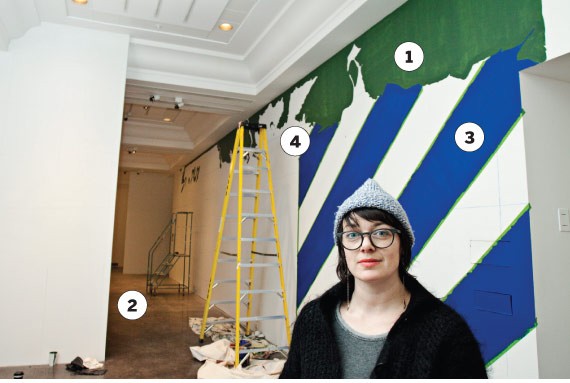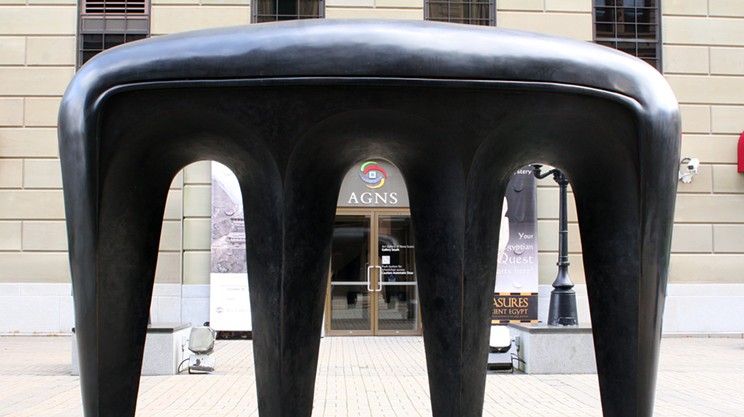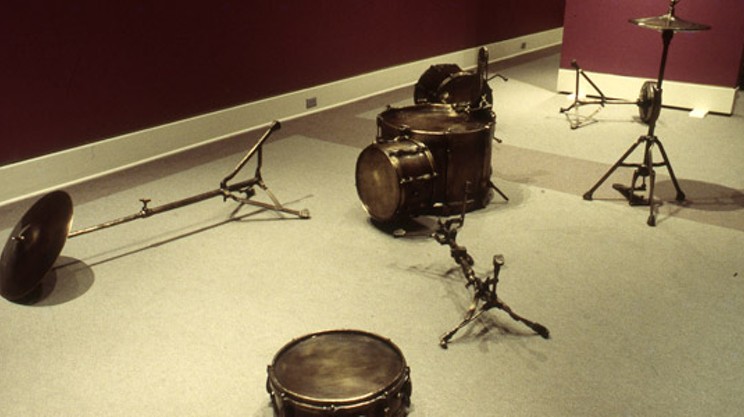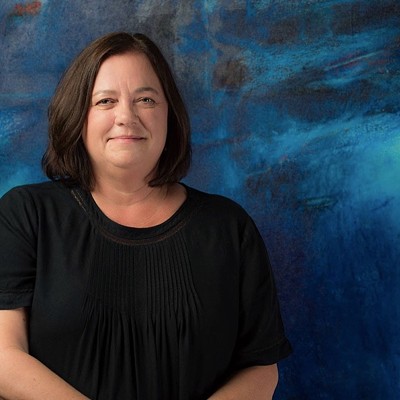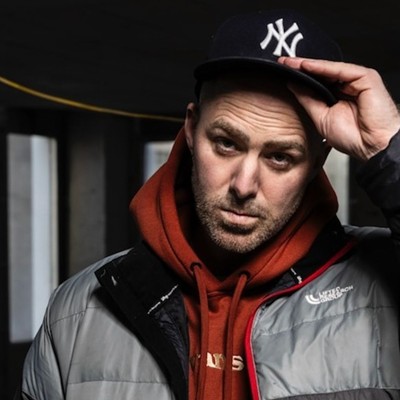King's exhibition at the Art Gallery of Nova Scotia promises to be an immersive—and potentially disorienting—experience. Bridging the two very different worlds of New York and Nova Scotia lies King's "Deepwater Horizon (BP)" wall painting, the central piece of the show. We interrupted installation to get a first peek.
1 The show is called Dark Utopian—the title is a reflection of my philosophical standpoint on life right now. On one hand I feel incredibly pessimistic about our ability to solve the world's problems, but at the same time extraordinarily optimistic that we're smart enough and that there's enough energy going in the right directions.
I recently moved to New York. Part of the reason I moved there is because I participate in art-making on a national and now international level—there's a weird success that is attached to being "jetset," being in Berlin, then Vienna, then New York. Part of me wants to participate because I'm programmed to think that's what success means, but part of me wants to buy a piece of land in Nova Scotia and farm. This painting is a proposal to myself, a kind of utopian dream where I can kind of live in both camps. The idea is I would teach myself how to sail and physically sail back and forth between the two places. The painting wraps the coast of that route—New York, Martha's Vineyard, Boston, Maine, Yarmouth, Liverpool, Chester, then Halifax there. I also wanted to make a line between our complicit relationship to companies like Google and their relationship with the military, we have these technologies because they were initially military technologies, now we get the user-friendly tool.
2 There will be a few other things in the space—two small rowboats, a couple of drawings, a small sculptural piece and some sound. The rowboats belonged to John Dunsworth—this is what I love about Nova Scotia, the word of mouth. My mom asked him.
3 The inspiration for how I'm treating the water comes from a military technique called dazzle camouflage. It was a technique used initially in WWI on the hulls of ships. Basically, you can't camo boats the way you can camo a tank because the ocean is always changing, so instead of trying to make the ship blend in they'd just make really crazy abstractions in wild colours so it would be a distraction to someone looking through a scope trying to shoot a missile. The kinds of mark-making I'm doing here is inspired by that. The way dazzle camouflage operates is that is has no rhyme or reason—there's chevrons, patterns, zig zags, curlicues and all sorts of stuff. It'll continue all around the room and it'll be an immersive kind of experience—the colours are kind of wackadoodle too.
4 I was thinking a lot about how the experience of travel is so different from the representation. To make paintings like this (the third in a series of wallpaintings based on satellite images) with reference to geography I use satellite images and Google Earth and all this stuff—we have this crazy way of being able to see the world but it has nothing to do with our visible experiences on earth. When I was doing this I was thinking about early maps, those kind of janky drawings. What I also wanted to do was make a single line, so the coastline becomes the horizon line of this painting.
Opening reception Friday, January 16, 6:30pm. Performance by Wet Denim, 9pm. To June 15, Art Gallery of Nova Scotia, 1723 Hollis Street
www.eleanorking.com
